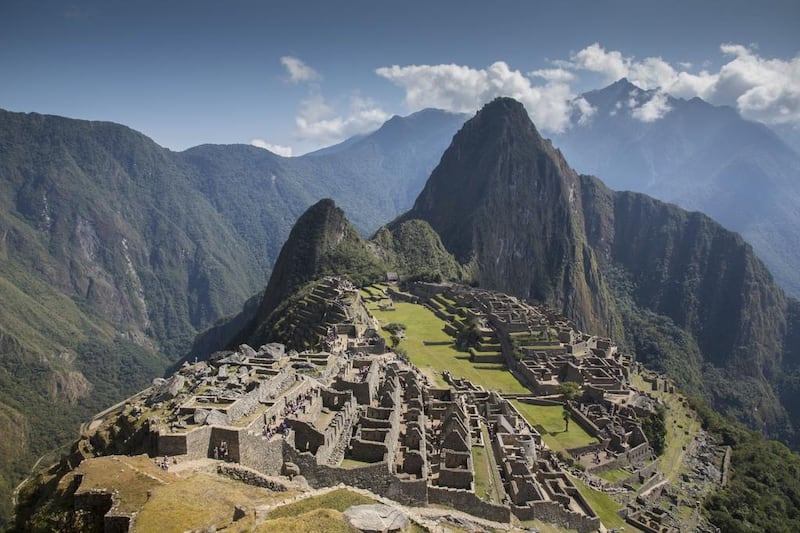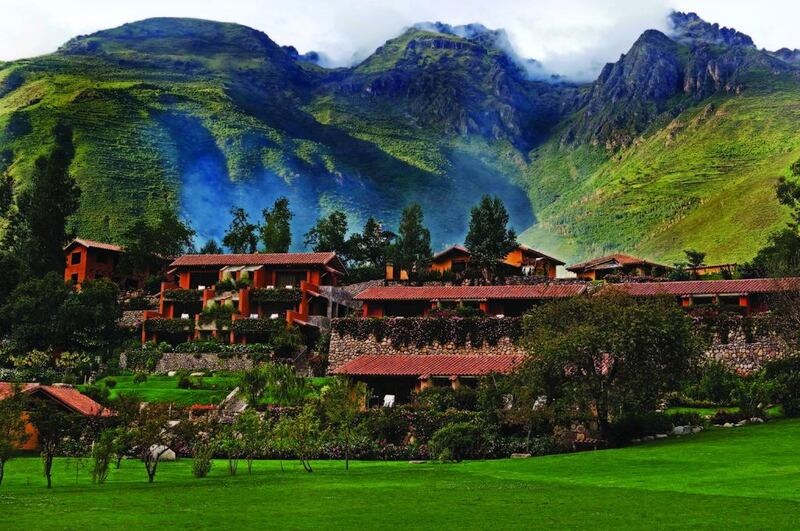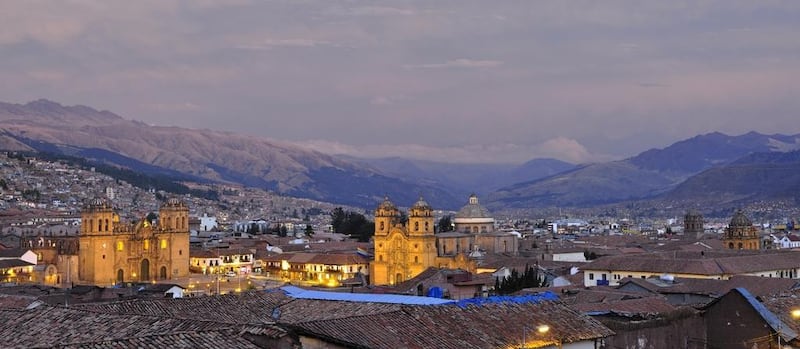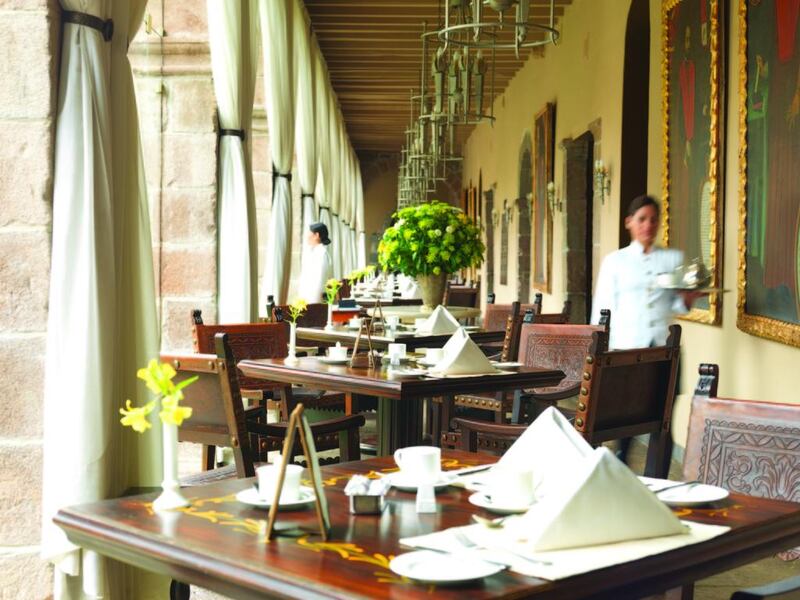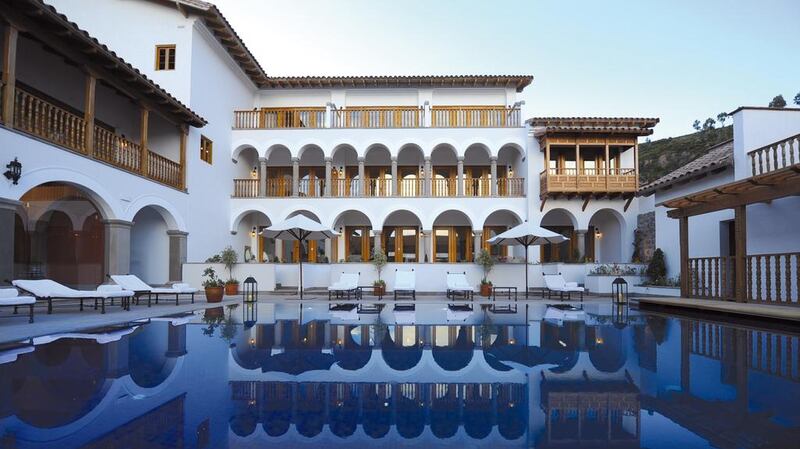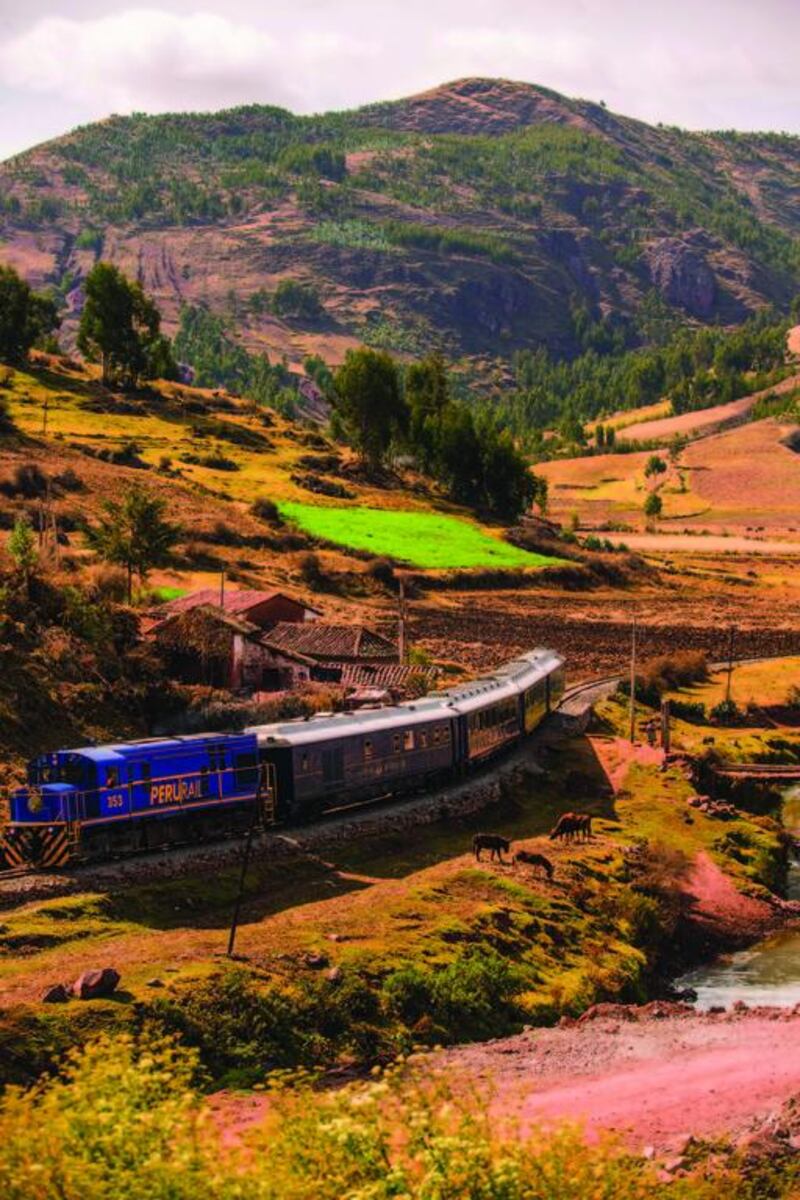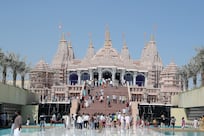I have never stayed in a hotel before where the doormen greet returning early-morning joggers with a towel and a bottle of water, and I have to say I was impressed. I know all too well what it’s like to make that post-jog walk of shame across five-star foyers, never looking my best, dripping with sweat and showing an inappropriate amount of knee. So the chance to regain a bit of composure, regain my breath and make myself a bit more presentable was certainly welcome.
Out on my run on the Malecón, the meandering ocean promenade in Peru’s capital city Lima and the location of the Belmond Miraflores Park hotel, I had been joined by throngs of joggers, dog-walkers, cyclists and yoga devotees, all out doing their thing in an early Pacific breeze before starting the day.
All that exercise had seemed very middle-class. It was something I found myself discussing later that day with Limeño Mateo Liébana over a lunch of fish ceviche – the tangy, fragrant national dish – in Tragaluz, the Miraflores’s fashionable restaurant. Liébana, who previously had a career as an architect in the United States, is the artist whose murals decorate the restaurant’s walls. “In the last decade, Peru has gained a new middle class,” he says. “It’s thanks to them that I can make a living here. They are the same people who like fine restaurants, too,” he adds, pointing across the road to another venue, Central, which had just been voted the world’s fourth best in the San Pellegrino list of 50 Best Restaurants of the World.
Like the towels and the water, this wasn’t what I was expecting of Peru. I was prepared for a place of condors and cordilleras, of Incas and alpacas, of mountain people and overgrown ruins. Clearly, gastronomy and art now need to be added to my list.
After many years of being held back by the Shining Path terrorists and bad presidents, the South American nation has finally rid itself of those stigmas and is forging ahead into the modern world. On a cycle tour the following day, my guide pointed out the ships patiently queuing up offshore, waiting their turn to get a slice of some of Peru’s massive mineral wealth. And though mining is still the country’s number-one earner, he says, tourism is catching up fast.
Lima itself, however, remains a staging post, a place to draw breath and change planes. The capital city is pleasant enough, and a good shop window into modern Peru, but for much of the year it lives under a lowering sky that promises rain, but never delivers. Limeños call it living “under the belly of a donkey”.
If, however, you’re looking to experience the side of Peru known for its dazzling colour and for one of the greatest wonders in the world, visit Cusco, sitting at 3,400 metres in the Andes. This is a Unesco World Heritage city that is a synthesis of conquistador cathedrals and Inca palaces, the former capital of an ancient empire, and the gateway to Machu Picchu.
For my own exploration of Peru, both ancient and modern, I put myself into the hands of the people who know luxury Peru best: travel company Belmond (formerly Orient-Express Hotels), which operates river cruisers, trains and hotels around the world, including Lima’s state-of-the-art Miraflores.
Of Cusco’s two heritage hotels – both located just off the city’s main square – I stay in the Belmond Palacio Nazarenas, a conversion of a convent built on the foundations of an Inca temple. This is a classically elegant place, featuring courtyards and corridors, flagstones and pillars, and a chapel stuffed with religious paintings. Up in my room, the bed is sheathed in a hand-embroidered silk coverlet and my balcony has a view over the city’s cascades of ceramic roof tiles, out to a horizon lined with mountains.
For dinner I head next door to El Tupay, a restaurant located in the Belmond Hotel Monasterio, which was once a dormitory for boys, founded in 1592. My dinner of marinated chicken is accompanied by a performance from Angela Medina, Peru's leading soprano, who holds opera nights under the arches of the restaurant. Listening to Nessun Dorma in a hotel in the Andes is another experience to add to my list of unexpected things about Peru.
It is rare not to feel the effects of the high altitude in Cusco, and it takes me a day to shake off a headache. Mind you, the city’s maze of lanes and squares hold plenty of distractions.
In Plaza de Armas, surrounded by arcaded restaurants, Quechua mountain people, Inca-descended and extremely colourfully dressed in woollen chalecos, stand with their llamas, ready to be photographed – for a fee. And up in the Wi-Fi cafes of the remarkable San Blas district, young travellers update their Facebook pages and eat cake, waiting for their bodies to adjust to the altitude before hitting the Inca Trail.
But the most colourful place of all is the San Pedro Market. Strong-faced stallholder ladies, the size and shape of their wide-brimmed hats signifying their social status, are surrounded by the likes of rams’ testicles, smoked guinea pigs and bags stuffed with offerings to the gods of the earth and the sky.
Cusco's railway station stands next to the market, but Belmond's luxury Hiram Bingham train to the "lost city" of Machu Picchu actually starts from Poroy, a 45-minute drive from town. This three-and-a-half-hour journey, in one of the world's finest trains, begins with lunch served at linen-covered tables, while the train ambles through the farmland of the Anta plain. Though the train itself is only 15 years old, it features charming 1920s decor, with Pullman carriages that include comfortable armchairs and ample amounts of polished wood and brass.
The journey then comes to the tortuous wheel-squealing descent through the Pomatales Gorge. With barely enough room for river and railway to coexist, this is a part of the journey best experienced from the rear observation car. In winter, when the river rises, it is too risky to run the train on this section.
Eventually, the gorge opens up into the valley of the fast-flowing Urubamba River, by which time the train has descended so much that lusher, more tropical cloud-forest vegetation has started to appear. The track slaloms along the riverbank beneath snow-topped peaks to reach its final stop at Aguas Calientes, the transport hub made particularly peaceful by the complete absence of cars. You can only get here by train or on foot. The trekking option along the Inca Trail is no easy task and can take between one and three days.
Machu Picchu itself, a 20-minute shuttle-bus ride from the train station, sits astride a high shoulder of land, some 400 metres above Aguas Calientes. Surrounding it, in a massive protective semicircle, is a ring of high Andean peaks. Meanwhile, the approach from below is blocked off by the almost complete horseshoe encirclement of the Urubamba River. This sheer physical isolation is what kept the Inca city so well hidden, for all those years.
Thanks to the positioning of the Belmond Sanctuary Lodge, the only hotel right by Machu Picchu’s gates, I am able to gain access to the lost city at 6am, when the site is still discreetly veiled in a diaphanous petticoat of mist.
Here Belmond's gentlemanly guide, Walter Rodriguez – who could so easily have been a character out of Indiana Jones – recounts the story of how the city was finally rediscovered by American explorer Hiram Bingham in 1911. I feel a similar tingle of "discovery" as the sun slowly climbs above the ring of encircling peaks, burning off the mist and revealing an intricately engineered jewel of geometry. Inca meets Escher in a labyrinth of hand-carved and hand-polished stones, in divisions and subdivisions, with fountains and plazas meant for farmers and rulers and temples and nobody still really knows what else.
Rodriguez walks me through, showing me the temples and the sacred rocks, with their symbolic shadows at key positions of the sun. He points out the sophistication of the water supply, the detailing of the stonework, the subdivisions of the municipal layout, split into agricultural, spiritual and administrative sections. He also describes the mystery of why the city was here in the first place and why it was so suddenly abandoned with no sign of attack. It was clear that the Incas didn’t want the Spanish conquistadors to find out about their existence.
We also visit the Sun Gate (Inti Punku) part way back on the Inca Trail, which is busy with young travellers coming in the other direction, eager to complete their trek. The Gate gives trekkers the first view of their ultimate destination after four days on the trail, and it is a place of exclamation and contemplation. And, of course, photo ops, with selfies galore.
By the time we arrive back down at Machu Picchu, the best moments of the day are over. The sun is now high above and day trippers pour in, so I withdraw to the Sanctuary Lodge, and its outdoor hot tub, which has a view over the distant Inca city.
Fast-forward another day, and I am in a sanctuary even farther removed. Belmond’s fifth and final hotel in Peru is the Rio Sagrado, in the pastoral heart of what is called the Sacred Valley, once at the heart of the Inca empire. Its riverbank setting, amidst lawns where alpacas graze, makes an ideal resting place to gather your strength, and your thoughts, before a long flight home.
Read this and more stories in Ultratravel magazine, out with The National on Thursday, May 19.
travel@thenational.ae
